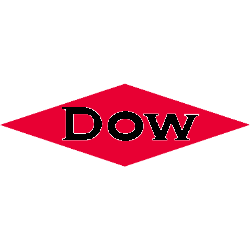Overall, Dow demonstrates resilience and adaptability in its business model with steady volume growth and effective cash management. However, it faces challenges from pricing pressures and uncertain economic conditions, particularly in Europe. The company's future prospects are bolstered by strategic investments in sustainability and innovation, but economic uncertainties could pose risks to growth.
Analysis Date: January 30, 2025
Last Updated: March 12, 2025
Trailing Twelve Months (TTM) values provide a view of the company's performance over the last year.
Graham Value Metrics
Benjamin Graham's value investing approach focuses on finding stocks with a significant margin of safety between their intrinsic value and market price.
Intrinsic Value
Estimated fair value based on Graham's formula
$65.70
Current Market Price: $28.20
IV/P Ratio: 2.33x (>1.0 indicates undervalued)
Margin of Safety
Gap between intrinsic value and market price
56.99999999999999%
Graham recommended a minimum of 20-30% margin of safety
Higher values indicate a greater potential discount to fair value
ROE: 6.1230368287497425
ROA: -0.09247627024008934
Gross Profit Margin: 10.720603295782515
Net Profit Margin: 2.597523508053254
Trailing Twelve Months (TTM) values provide a view of the company's performance over the last year.
Strong Operating Profit Margin
27.20%
Operating Profit Margin
With an operating profit margin of 27.20%, DOW effectively converts a significant portion of its revenue into operating income, showcasing operational efficiency.
Robust Gross Profit Margin
33.08%
Gross Profit Margin
A gross profit margin of 33.08% indicates that DOW has a solid ability to cover costs related to production and maintain profitability at the gross level.
Low Net Profit Margin
The net profit margin of 2.58% is quite low, suggesting that after all expenses, DOW retains a minimal portion of revenue as profit, which could limit growth.
Return on Equity Needs Improvement
A return on equity of 6.11% is low, indicating that DOW's ability to generate profits from shareholders' equity is not very strong.
About Profitability Metrics
Profitability metrics measure a company's ability to generate earnings relative to its revenue, operating costs, and other relevant metrics. Higher values generally indicate better performance.
Return on Equity (ROE)
Measures how efficiently a company uses its equity to generate profits
6.12%
10%
15%
Higher values indicate better returns for shareholders
TTM (as of 2025-04-16)
Return on Assets (ROA)
Measures how efficiently a company uses its assets to generate profits
-0.09%
3%
7%
Higher values indicate better asset utilization
TTM (as of 2025-04-16)
Gross Profit Margin
Percentage of revenue retained after accounting for cost of goods sold
10.72%
20%
40%
Higher values indicate better efficiency in production
TTM (as of 2025-04-16)
Net Profit Margin
Percentage of revenue retained after accounting for all expenses
2.60%
8%
15%
Higher values indicate better overall profitability
TTM (as of 2025-04-16)
Good Current Ratio
DOW's current ratio of 1.6126 indicates that the company has more current assets than current liabilities, which is a positive sign of liquidity.
Strong Interest Coverage
14.83
Interest Coverage Ratio
An interest coverage ratio of 14.83 suggests that DOW can easily meet its interest obligations from earnings, indicating good financial health.
High Debt-to-Equity Ratio
0.9885
Debt-to-Equity Ratio
The debt-to-equity ratio of 0.9885 suggests that DOW has a relatively high level of debt compared to equity, which could pose risks if not managed properly.
Negative Free Cash Flow Per Share
-0.2146
Free Cash Flow Per Share
With free cash flow per share at -0.2146, DOW is not generating positive cash flow on a per-share basis, which can limit potential for dividends and reinvestment.
About Financial Health Metrics
Financial health metrics assess a company's ability to meet its financial obligations and its overall financial stability.
Debt to Equity Ratio
Total debt divided by total equity
0.96x
1.0x
2.0x
Lower values indicate less financial leverage and risk
Less than 1.0 is conservative, 1.0-2.0 is moderate, >2.0 indicates high risk
Q4 2024
Current Ratio
Current assets divided by current liabilities
1.61x
1.0x
2.0x
Higher values indicate better short-term liquidity
Less than 1.0 is concerning, 1.0-2.0 is adequate, greater than 2.0 is good
Q4 2024


